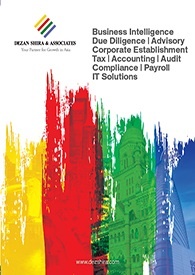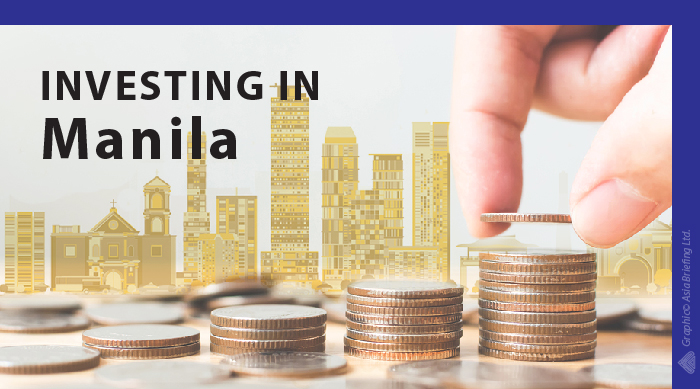Investing in Manila
By Vasundhara Rastogi
The Philippines has shown strong economic growth in the last one year, and is expected to grow at the rate of 6.5-7 percent annually in the coming years. Given its strong economic prospects, it’s the best time for foreign businesses to explore business opportunities in the country.
Manila, the capital and main city of the Philippines, offers a variety of business possibilities in industries ranging from manufacturing to information technology (IT), and financial services. In this article, we provide a brief overview of the city’s investment climate.
![]() RELATED: Pre-Investment and Market Entry Advisory from Dezan Shira & Associates
RELATED: Pre-Investment and Market Entry Advisory from Dezan Shira & Associates
City profile
Manila is situated in the southern part of Luzon Island, which is the largest of the three main islands in the Philippine archipelago. Along with its 16 neighboring cities, Manila forms a single administrative region known as Metropolitan Manila or the National Capital Region (NCR). Over the last century, Manila has grown rapidly to become one of the world’s most densely populated city. It has a total land area of 38.55 square kilometers that houses over 1.78 million people (2015 census), giving it a density of 46,174 persons per square kilometer.
Officially, Filipino is the chief language of the Philippine. However, English is widely used as a medium of communication in most government institutes and private organizations. In fact, according to the National Statistics Office estimates, over 78 percent of the populations speaks English. With English matching Filipino as the country’s official language, the rapidly growing young population has become a high-value asset for voice-based service industries in the country, such as business process outsourcing (BPO). In 2011, the Philippines overtook India as the world’s leading destination in BPO. Currently, Manila (NCR) ranks fourth in Tholon’s Services Globalization (Outsourcing) Index reflecting the immense potential of the country as a business process outsourcing hub.
Manufacturing
Manila houses a diverse range of manufacturing industries that include food and tobacco processing, textile production, and chemical processing. It also produces lumber and wood items, rope and cordage, soap, and other goods. Small factories are mostly situated in Binondo, Santa Cruz and the high-density district of Tondo – that is closely located to the country’s largest ports: the Manila North Harbour and the Manila International Container Terminal. Heavy industries are located in the districts of Paco, Pandacan, and Santa Ana.
Finance and other services
Manila is Philippines’ chief commercial and financial hub. From finance to manufacturing, shipping, and hauling, its 16 districts offer various opportunities for setting up a business in Manila. The districts of Makati and Ortigas, in particular, are the prime areas for large corporate establishments and foreign businesses. There are several financial institutions headquartered in this part of the city such as the Development Bank of the Philippines, the Philippine National Bank, the Philippine Veterans Bank, the Government Service Insurance System, and the Social Security System among others. Other notable commerce areas are Alabang Business District, Fort Bonifacio Global City, and Eastwood City.
 RELATED: Investing in Cambodia’s Phnom Penh
RELATED: Investing in Cambodia’s Phnom Penh
Transport and connectivity
Traffic congestion is a serious problem in the whole of Philippines. The easy means of transportation are usually buses, jeepneys (small buses built on the chassis of jeeps), taxis, tricycles and horse carriages (Kalesa) – mostly used in the major streets of Manila. However, the most convenient mode of transportation is Manila’s elevated rail line – called the Light Rail Transit (LRT) that passes through much of the city and Manila (NCR). Manila (NCR) has three main train networks: LRT 1, the green line that connects NCR cities in the north; LRT 2, the blue line that connects city’s east to the west; and Manila Rail transit- 3, the yellow line that runs parallel to the city’s major highway.
Manila also functions as the center of operation to the main railway terminal of the Philippines National Railways (composed of the PNR metro commuter) that connects the city with northern and southern Luzon.
Its Ninoy Aquino International Airport (also referred to as Manila International Airport) serves as a major air gateway to international destinations and comprises one domestic terminal and three international terminals.
To the west of the city is Manila Bay, which serves as an excellent natural harbor to the Port of Manila – the primary seaport of the Philippines. The port, however, does not have railway connectivity and is connected to the rest of the Philippines via road.
Recognizing the importance of better and more efficient transportation facilities, the Philippines’ Department of Transportation and Communications (DOTC) has recently laid out several plans that offer improved public transportation networks, alternative mobility options, and cleaner transport through alternative fuels and green vehicles. These plans are, however, yet to be implemented.
|
 Dezan Shira & Associates Brochure
Dezan Shira & Associates Brochure
Dezan Shira & Associates is a pan-Asia, multi-disciplinary professional services firm, providing legal, tax and operational advisory to international corporate investors. Operational throughout China, ASEAN and India, our mission is to guide foreign companies through Asia’s complex regulatory environment and assist them with all aspects of establishing, maintaining and growing their business operations in the region. This brochure provides an overview of the services and expertise Dezan Shira & Associates can provide.
 An Introduction to Doing Business in ASEAN 2017
An Introduction to Doing Business in ASEAN 2017
An Introduction to Doing Business in ASEAN 2017 introduces the fundamentals of investing in the 10-nation ASEAN bloc, concentrating on economics, trade, corporate establishment, and taxation. We also include the latest development news for each country, with the intent to provide an executive assessment of the varying component parts of ASEAN, assessing each member state and providing the most up-to-date economic and demographic data on each.
 How to Set Up in the Philippines
How to Set Up in the Philippines
In this issue of ASEAN Briefing magazine, we provide an introduction to the Philippines as well as analyze the various market entry options available for investors interested in expanding to the island nation. We also discuss the step-by-step process for setting up a business entity in the Philippines, highlighting the various statutory requirements for overseas investors. Finally, we explore the potential for Singapore to serve as a viable base to administer investors’ Philippine operations.










